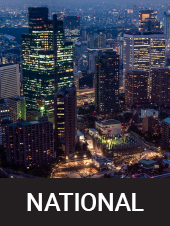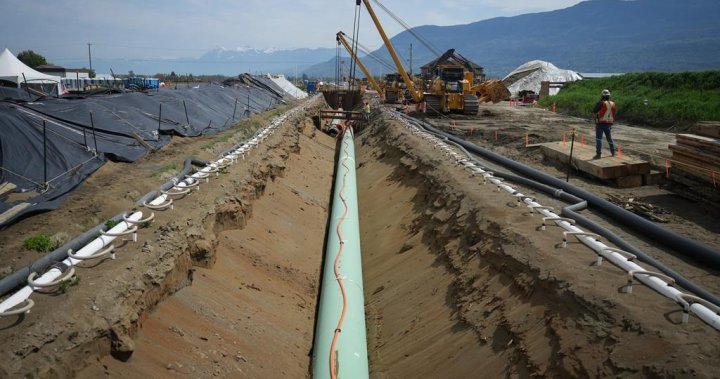China employed a record 125 aircraft, as well as its Liaoning aircraft carrier and ships, in large-scale military exercises surrounding Taiwan and its outlying islands Monday, simulating the sealing off of key ports in a move that underscores the tense situation in the Taiwan Strait, officials said.
China made clear it was to punish Taiwan’s president for rejecting Beijing’s claim of sovereignty over the self-governed island.
The drills came four days after Taiwan celebrated the founding of its government on its National Day, when Taiwanese President Lai Ching-te said in a speech that China has no right to represent Taiwan and declared his commitment to “resist annexation or encroachment.”
“This is a resolute punishment for Lai Ching-te’s continuous fabrication of ’Taiwan independence’ nonsense,” China’s Taiwan Affairs Office said in a statement.
Taiwan’s Ministry of National Defense said 90 of the aircraft, including warplanes, helicopters and drones, were spotted within Taiwan’s air defense identification zone. The single-day record counted aircraft from 5:02 a.m. to 4:30 p.m. Shipping traffic was operating as normal, the ministry said.
Taiwan remained defiant. “Our military will definitely deal with the threat from China appropriately,” Joseph Wu, secretary-general of Taiwan’s security council, said at a forum in Taipei, Taiwan’s capital. “Threatening other countries with force violates the basic spirit of the United Nations Charter to resolve disputes through peaceful means.”

Taiwan’s Presidential Office also called on China to “cease military provocations that undermine regional peace and stability and stop threatening Taiwan’s democracy and freedom.”

Get breaking National news
For news impacting Canada and around the world, sign up for breaking news alerts delivered directly to you when they happen.
A map aired on China’s state broadcaster CCTV showed six large blocks encircling Taiwan indicating where the military drills were being held, along with circles drawn around Taiwan’s outlying islands.
Taiwan’s defense ministry said the six areas focused on key strategic locations around and on the island.
China deployed its Liaoning aircraft carrier for the drills, and CCTV showed a J-15 fighter jet taking off from the deck of the carrier.
China’s People’s Liberation Army’s Eastern Theater Command spokesperson Senior Captain Li Xi said Monday evening that the drill was successfully completed.
Li said the navy, army air force and missile corps were all mobilized for the drills, which were an integrated operation. “This is a major warning to those who back Taiwan independence and a signifier of our determination to safeguard our national sovereignty,” Li said in a statement on the service’s public media channel.
Chinese Foreign Ministry spokesperson Mao Ning said at a daily briefing that China did not consider relations with Taiwan a diplomatic issue, in keeping with its refusal to recognize Taiwan as a sovereign state.
“I can tell you that Taiwan independence is as incompatible with peace in the Taiwan Strait as fire with water. Provocation by the Taiwan independence forces will surely be met with countermeasures,” Mao said.
Taiwan’s Defense Ministry said it deployed warships to designated spots in the ocean to carry out surveillance and stand at ready. It also deployed mobile missile and radar groups on land to track the vessels at sea. It said as of Monday morning, they had tracked 25 Chinese warplanes and seven warships and four Chinese government ships, though it did not specify what types of ships they were.
On the streets of Taipei, residents were undeterred. “I don’t worry, I don’t panic either, it doesn’t have any impact to me,” Chang Chia-rui said.
Another Taipei resident, Jeff Huang, said: “Taiwan is very stable now, and I am used to China’s military exercises. I have been threatened by this kind of threats since I was a child, and I am used to it.”
The U.S., Taiwan’s biggest unofficial ally, called China’s response to Lai’s speech unwarranted. “We call on (Beijing’s government) to act with restraint and to avoid any further actions that may undermine peace and stability across the Taiwan Strait and in the broader region,” State Department spokesperson Matthew Miller said in a statement.
China held similar large-scale exercises after Lai was inaugurated in May. Lai continues the eight-year rule of the Democratic Progressive Party that rejects China’s demand that it recognize Taiwan is a part of China.

China also held massive military exercises around Taiwan and simulated a blockade in 2022 after a visit to the island by Nancy Pelosi, who was then speaker of the U.S. House of Representatives. China routinely states that Taiwan independence is a “dead end” and that annexation by Beijing is a historical inevitability. China’s military has increased its encircling of Taiwan’s skies and waters in the past few years, holding joint drills with its warships and fighter jets on a near-daily basis near the island.
Also on Monday, China’s Taiwan Affairs Office announced it was sanctioning two Taiwanese individuals, Puma Shen and Robert Tsao, for promoting Taiwanese independence. Shen is the co-founder of the Kuma Academy, a nonprofit group that trains civilians on wartime readiness. Tsao donated $32.8 million to fund the academy’s training courses. Shen and Tsao are forbidden to travel to China, including Hong Kong.
Taiwan was a Japanese colony before being unified with China at the end of World War II. It split away in 1949 when Chiang Kai-shek’s Nationalists fled to the island as Mao Zedong’s Communists defeated them in a civil war and took power.
–Wu reported from Bangkok.
© 2024 The Canadian Press





